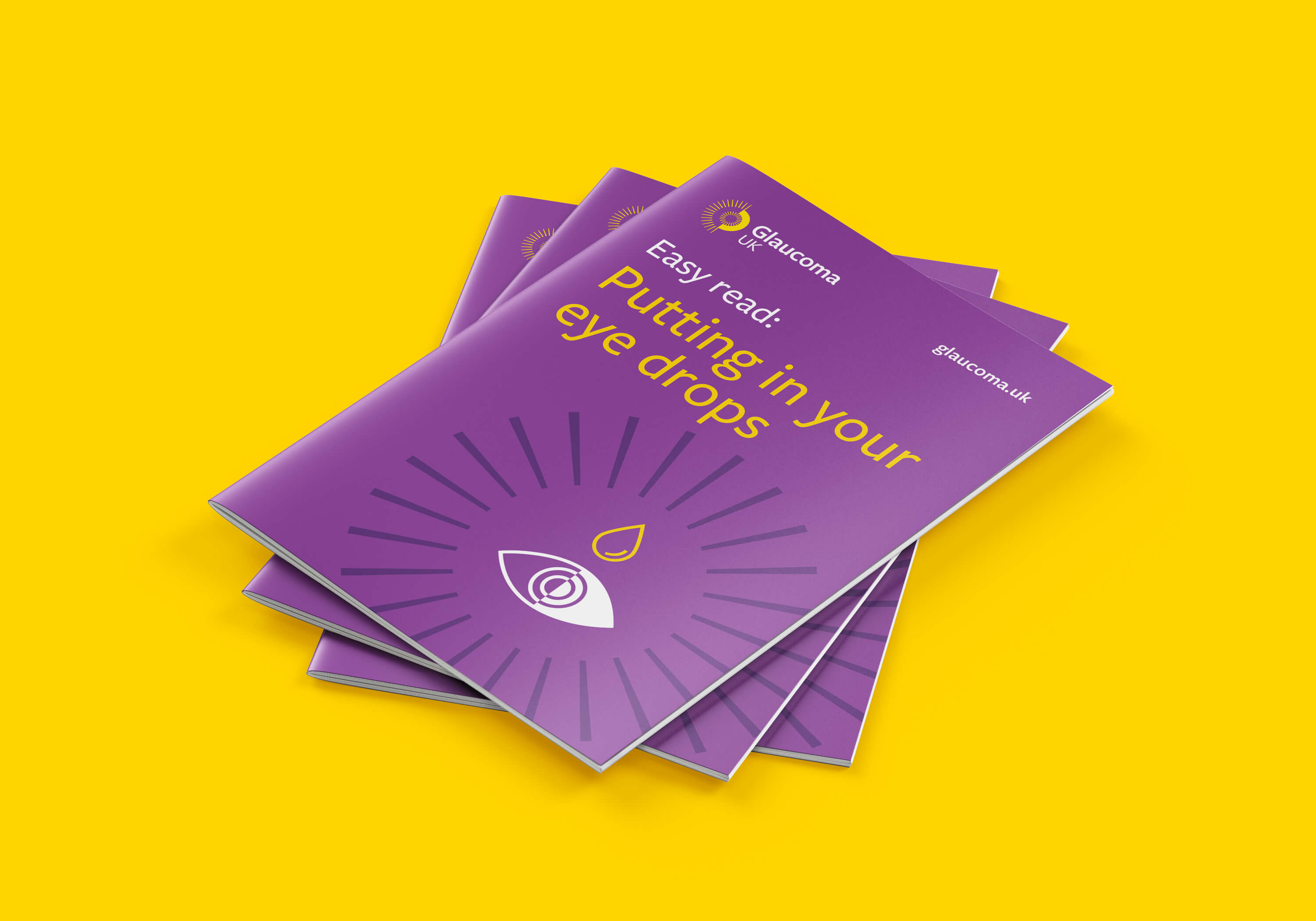There are an estimated 700,000 people in the UK living with glaucoma, and half don’t know they have it. For many years, eye drops have been the most common treatment for those diagnosed with the disease. Yet an alarmingly high number of glaucoma patients who are prescribed eye drops do not use them correctly, risking serious damage to their vision.
As part of World Glaucoma Week 2022, which will run from 6 March to 12 March, Glaucoma UK is offering a helping hand by releasing their ‘Easy read: putting in your eye drops’ guide. This new resource will give patients simple, easy to understand advice on how to put in eye drops, with clear text and step-by-step diagrams. It will also answer common questions patients often have about the treatment, such as how to schedule in multiple drops and what to do if the drop misses their eye.

The handy guide is available to download and order for free. Image: Glaucoma UK..
Joanna Bradley, Head of Support Services at Glaucoma UK, said: “One of our aims as a charity is to help people with glaucoma to live well. We regularly hear from patients who struggle with putting in their drops, either due to the bottle designs or because they don’t know how best to get the drops in their eye. They are often very anxious about the subsequent impact this might have on their vision. In fact, eye drops are one of the top three reasons that people call our helpline. We understand that healthcare services aren’t always able to commit sufficient time to show each patient how to put in their eye drops. So, we wanted to help by providing patients with a useful step-by-step guide containing tips and advice on how to do this. We’re very excited to be launching this new resource, which we hope will benefit patients and healthcare professionals alike.”
Glaucoma UK’s new ‘Easy read: putting in your eye drops’ guide is now available to download and order free of charge on their website glaucoma.uk/easy-read-eye-drops. The charity is encouraging all healthcare professionals to make glaucoma patients aware of this indispensable resource by displaying it in hospitals and waiting rooms.
The new guide was supported by a financial grant provided by Allergan Ltd, an AbbVie company, who have had no involvement in the design or content of this resource.



